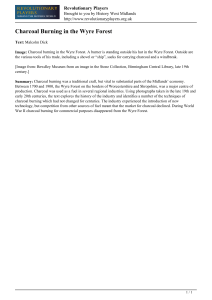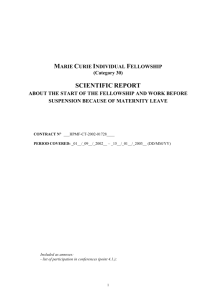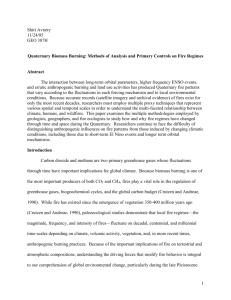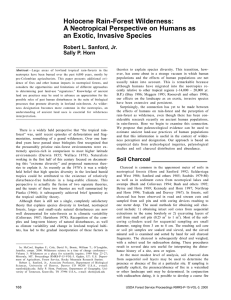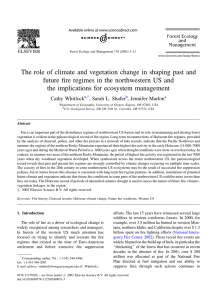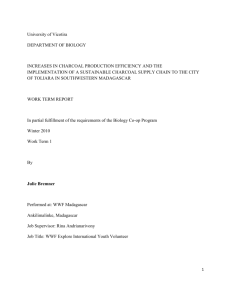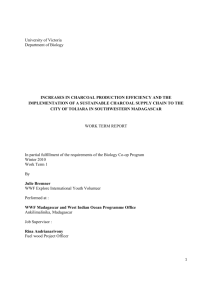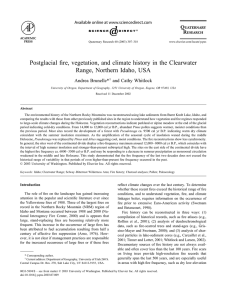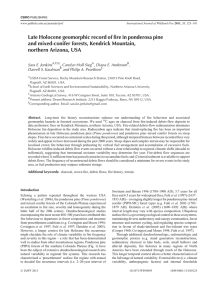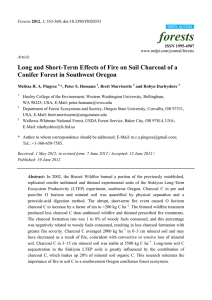Arboreal vegetation succession and tree
advertisement
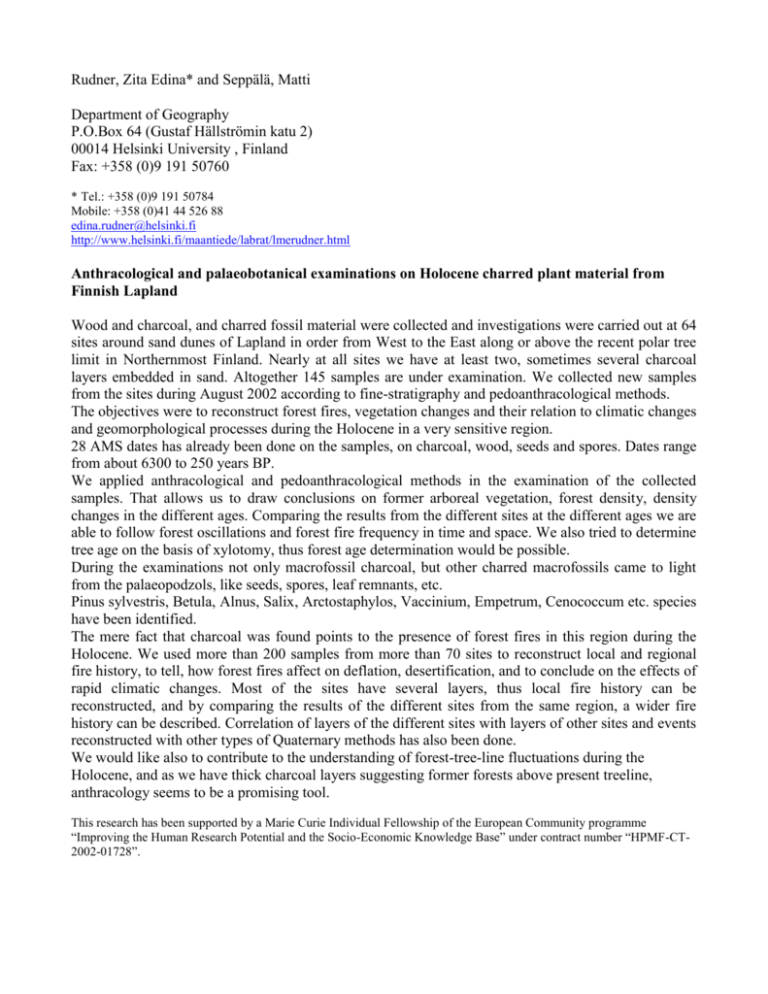
Rudner, Zita Edina* and Seppälä, Matti Department of Geography P.O.Box 64 (Gustaf Hällströmin katu 2) 00014 Helsinki University , Finland Fax: +358 (0)9 191 50760 * Tel.: +358 (0)9 191 50784 Mobile: +358 (0)41 44 526 88 edina.rudner@helsinki.fi http://www.helsinki.fi/maantiede/labrat/lmerudner.html Anthracological and palaeobotanical examinations on Holocene charred plant material from Finnish Lapland Wood and charcoal, and charred fossil material were collected and investigations were carried out at 64 sites around sand dunes of Lapland in order from West to the East along or above the recent polar tree limit in Northernmost Finland. Nearly at all sites we have at least two, sometimes several charcoal layers embedded in sand. Altogether 145 samples are under examination. We collected new samples from the sites during August 2002 according to fine-stratigraphy and pedoanthracological methods. The objectives were to reconstruct forest fires, vegetation changes and their relation to climatic changes and geomorphological processes during the Holocene in a very sensitive region. 28 AMS dates has already been done on the samples, on charcoal, wood, seeds and spores. Dates range from about 6300 to 250 years BP. We applied anthracological and pedoanthracological methods in the examination of the collected samples. That allows us to draw conclusions on former arboreal vegetation, forest density, density changes in the different ages. Comparing the results from the different sites at the different ages we are able to follow forest oscillations and forest fire frequency in time and space. We also tried to determine tree age on the basis of xylotomy, thus forest age determination would be possible. During the examinations not only macrofossil charcoal, but other charred macrofossils came to light from the palaeopodzols, like seeds, spores, leaf remnants, etc. Pinus sylvestris, Betula, Alnus, Salix, Arctostaphylos, Vaccinium, Empetrum, Cenococcum etc. species have been identified. The mere fact that charcoal was found points to the presence of forest fires in this region during the Holocene. We used more than 200 samples from more than 70 sites to reconstruct local and regional fire history, to tell, how forest fires affect on deflation, desertification, and to conclude on the effects of rapid climatic changes. Most of the sites have several layers, thus local fire history can be reconstructed, and by comparing the results of the different sites from the same region, a wider fire history can be described. Correlation of layers of the different sites with layers of other sites and events reconstructed with other types of Quaternary methods has also been done. We would like also to contribute to the understanding of forest-tree-line fluctuations during the Holocene, and as we have thick charcoal layers suggesting former forests above present treeline, anthracology seems to be a promising tool. This research has been supported by a Marie Curie Individual Fellowship of the European Community programme “Improving the Human Research Potential and the Socio-Economic Knowledge Base” under contract number “HPMF-CT2002-01728”.
